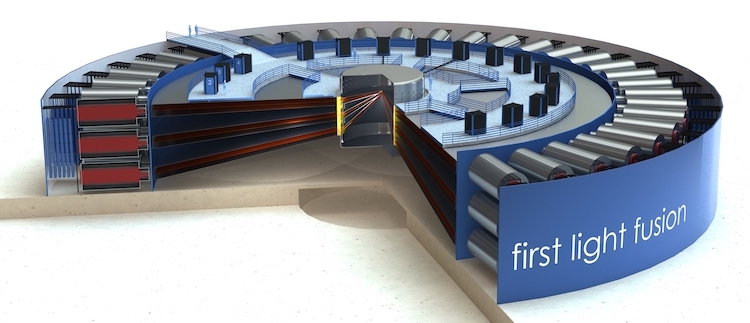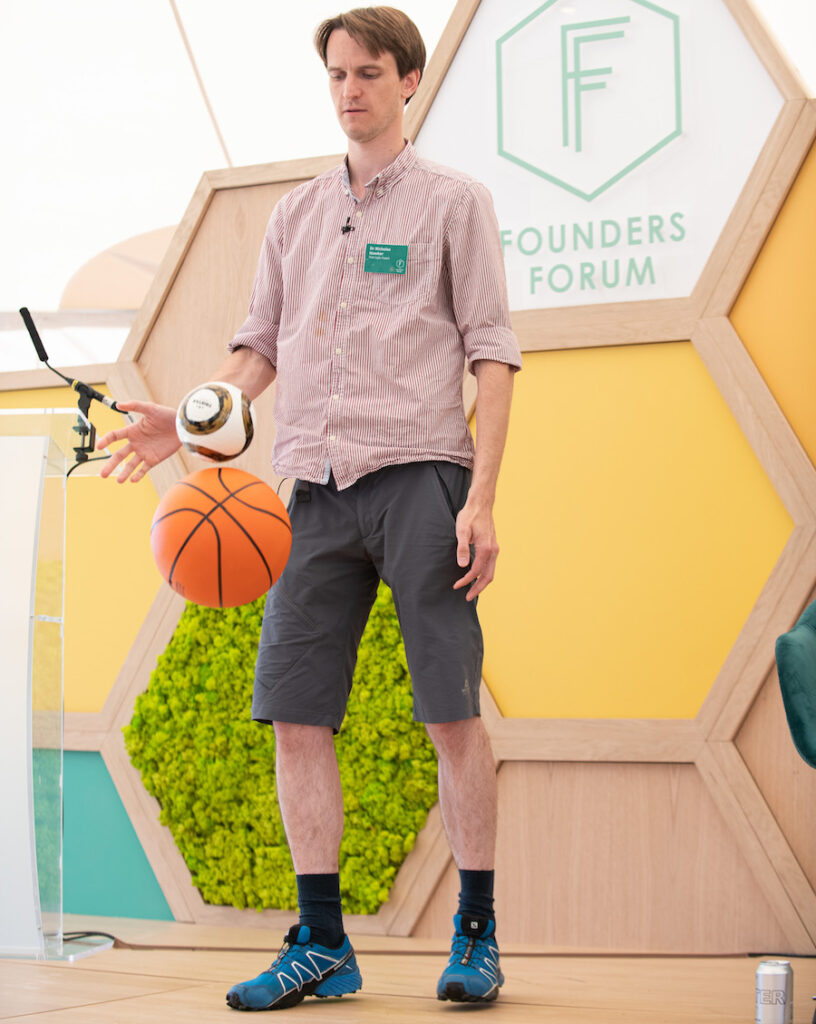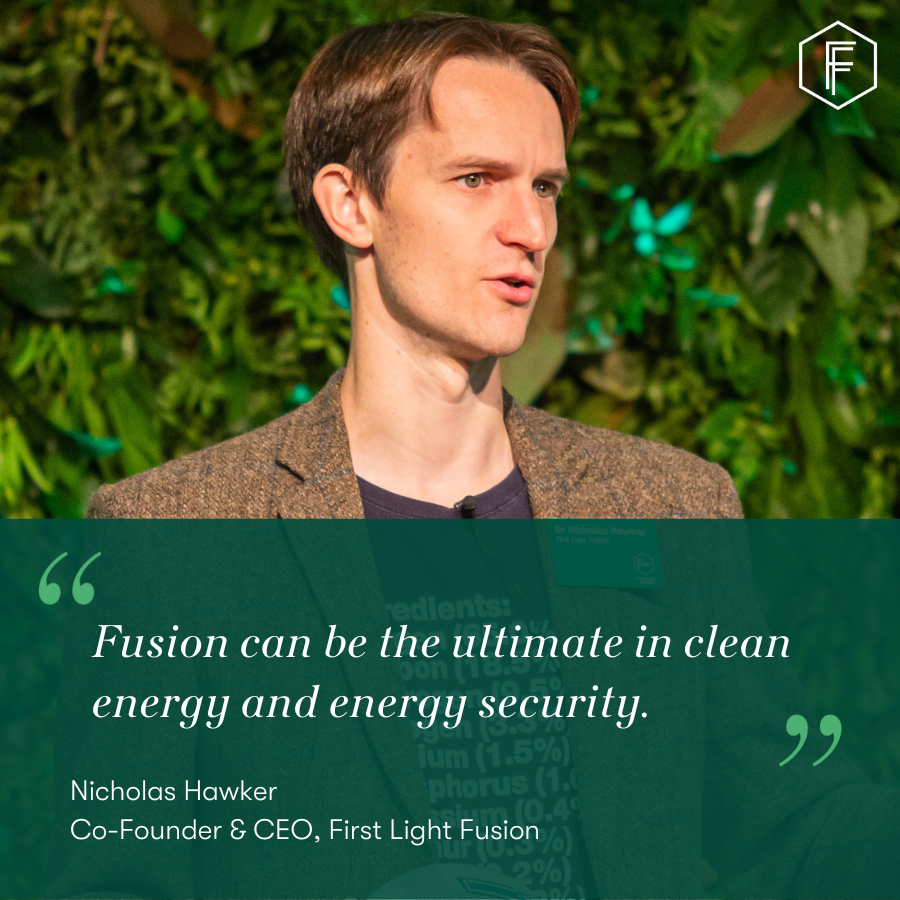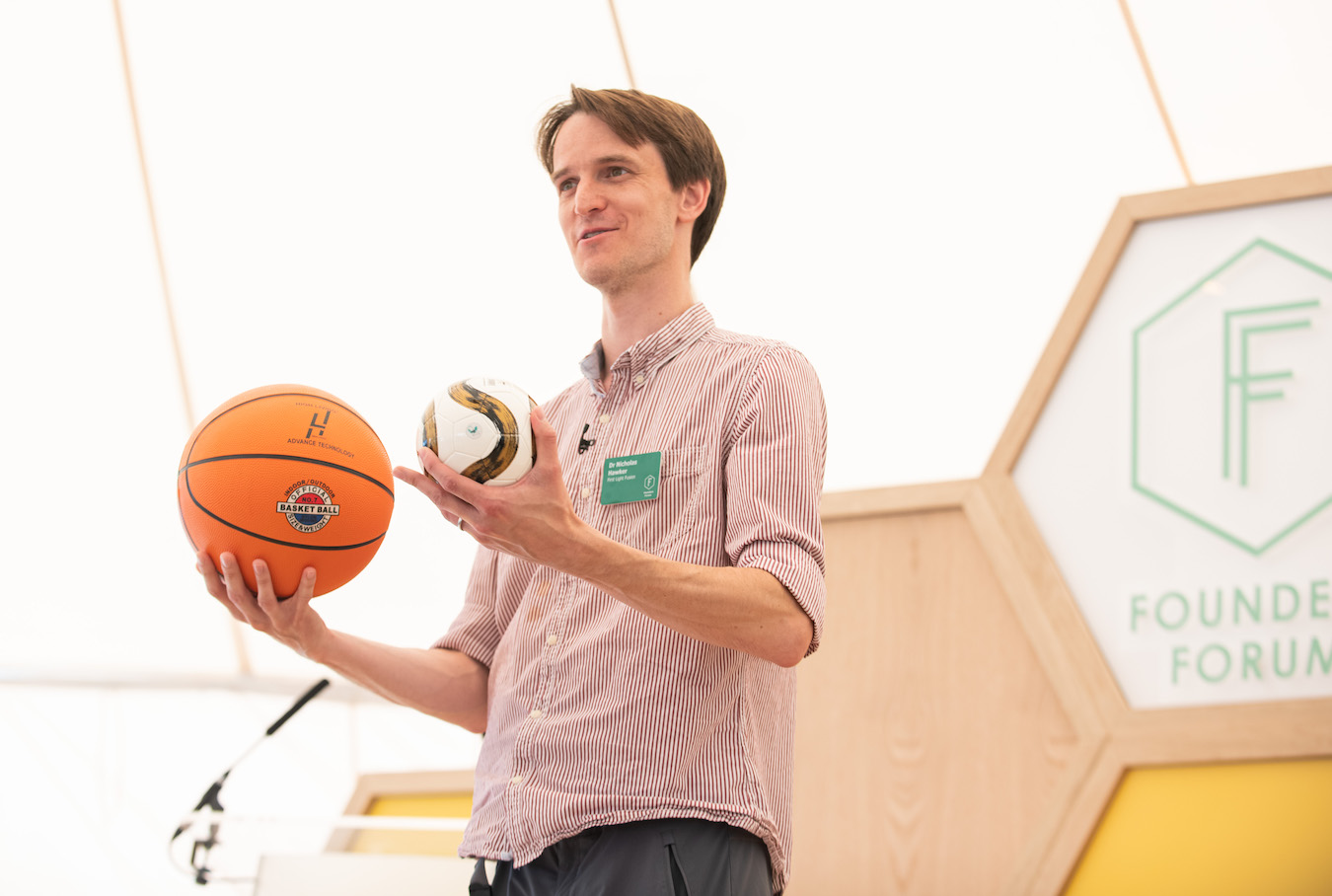Last updated on April 26, 2023
From stadium-size test sites to pistol shrimps, Dr Nicholas Hawker reveals the story behind First Light Fusion, the UK startup pursuing a unique route to commercial fusion power.
The first thing you’ll notice when you enter First Light Fusion’s massive net gain demonstrator facility will be the smell of transformer oil.
Potentially a world-changing source of clean power, fusion is a process where two light atomic nuclei combine to release huge amounts of low-carbon, low-radiation energy.
While others are using lasers or magnets, Nick Hawker and his team achieved fusion for the first time in 2021 by firing a high-velocity projectile at a pellet containing deuterium and tritium fuel.
First Light Fusion’s new facility will house the largest pulsed power machine in the world, Machine 4, designed to prove that the physics behind the firm’s projectile-based approach works and that energy can be gained from inertial fusion.
Machine 4 consists of a central chamber, where the projectile sits, encased in a vacuum chamber, encased in another chamber containing five Olympic swimming pools worth of water. This structure is then submerged in transformer oil, acting as additional insulation against the electric current needed for fusion – equivalent to 5,000 lightning bolts striking at the same time!
Nick aims to have the purpose-built facility up and running by 2030, and a pilot power plant producing electricity ready by 2035. Once complete, Nick says his approach will offer a faster and cheaper route to commercial fusion power.

Building First Light Fusion, Raising VC Investment
It started with shrimp. During his PhD at the University of Oxford, Nick studied the process of fusion by focusing on the pistol shrimp – a tiny, 3-5 cm long creature with one disproportionately large claw.
“The shrimp can shut its big claw quickly, which produces a shockwave in the water that stuns its prey and at the same time produces bubbles,” Nick explains. “The shockwave makes the bubbles collapse very quickly, the vapour inside is heated to tens of thousands of degrees and gives off bright flashes of light.”
Nick ran simulations to understand whether this phenomenon, and the energy produced, could reach conditions for fusion. But turning a shrimp’s claw into a large-scale, high-velocity projectile, and achieving fusion, doesn’t happen overnight.
Since founding First Light Fusion in 2011, Nick has raised £77m to turn his lab-based simulations into reality, including a $45m (£36m) Series C funding round in February 2022. He’s now seeking significant investment to fund the next stage of research.
The gain demonstrator facility will be about the size of a football stadium and construction, at the UK Atomic Energy Authority in Oxfordshire, will begin in 2024.
“You need to find investors who share your long-term view,” Nick reflects. “One of our investors is a pension fund and the average age of their investors is 37 – they’re really investing for the long term!”
The fundamental feature of First Light Fusion’s technology is the amplifier, which sits between the projectile and the fuel pellet, amplifying the velocity needed for the implosion. The amplifier, which the company calls the ‘target’, is unique and proprietary to First Light Fusion.
Its effect is the same as when a tennis ball hits a basketball in mid-flight, steals its energy, and bounces off with much higher velocity.
Nick used bouncing balls to demonstrate this effect for the first time at Founders Forum 2022, where he presented First Light Fusion as one of our Rising Stars. “It was a two-minute pitch. I thought, go for it and see what happens. It worked well, so now I use it all the time!”

When communicating complex technology to investors, Nick says founders should use analogies and real-life examples to explain different aspects of their tech. For First Light Fusion’s Series A round, Nick invited the lead investors into the lab.
“We ran the whole experiment for them. It was tense; it could have gone wrong. We had the loading of the projectile gun, the checks, the countdown, and then the big bang when the projectile was fired. When it worked, you could see the investor team turn to each other and smile.”
What’s the Future For Fusion?
We named First Light Fusion one of our climate tech startups to watch last year and momentum is building towards fusion power.
In December 2022, researchers at the US National Ignition Facility in California declared a major breakthrough as their laser-based approach to fusion successfully generated more energy than was pumped in.
In February 2023, UK fusion power company, Tokamak Energy, announced the creation of a world-first set of ‘super magnets’, almost a million times stronger than the Earth’s magnetic field, which can be used to test nuclear fusion power plants.
“The UK has a massive competitive advantage in fusion power,” Nick says. “We’re basically the only country in the world to sort out regulation for fusion rather than slapping the nuclear tag on it.
“There’s not much stopping us. We could go faster and build our pilot plant now, but you need investors on board. The gain demonstrator is about addressing investor risk appetite.”

Nick is now focused on recruiting and building talent as he plans to expand from 80 to 250 people in the next few years. Fusion emits no CO2 and no high level radiation. The only raw inputs are lithium and tritium, which is found in water. For Nick, fusion promises a source of near limitless clean energy.
His advice for startup founders? Break out of your local ecosystem and think big. “Founders Forum brings together the most ambitious group of people I’ve ever been part of – and that ambition is infectious. You start to think, why not?
“The market for fusion power is enormous. We need clean power and it’s questionable whether we can provide as much as we need with solar and wind alone.
“Fusion can be the ultimate in clean energy and energy security.”
Subscribe to Founders News to get more startup stories like this one direct to your inbox.
 All Posts
All Posts


